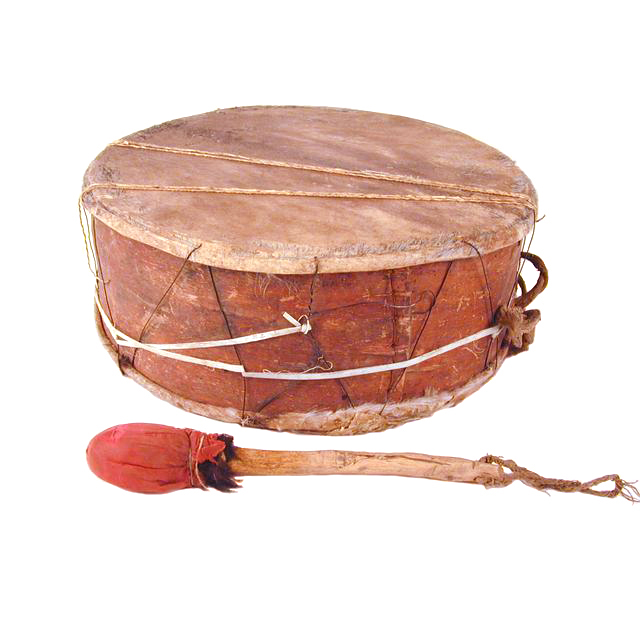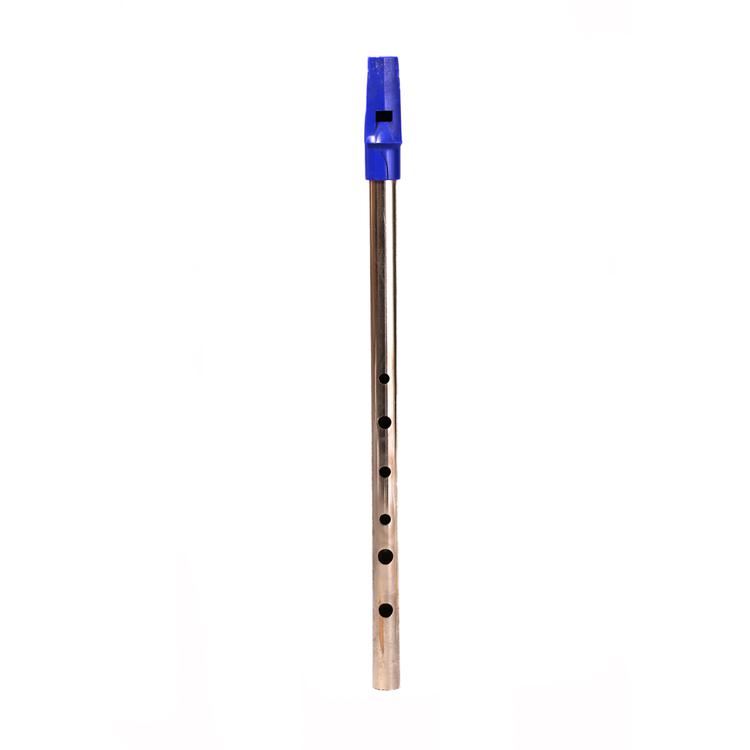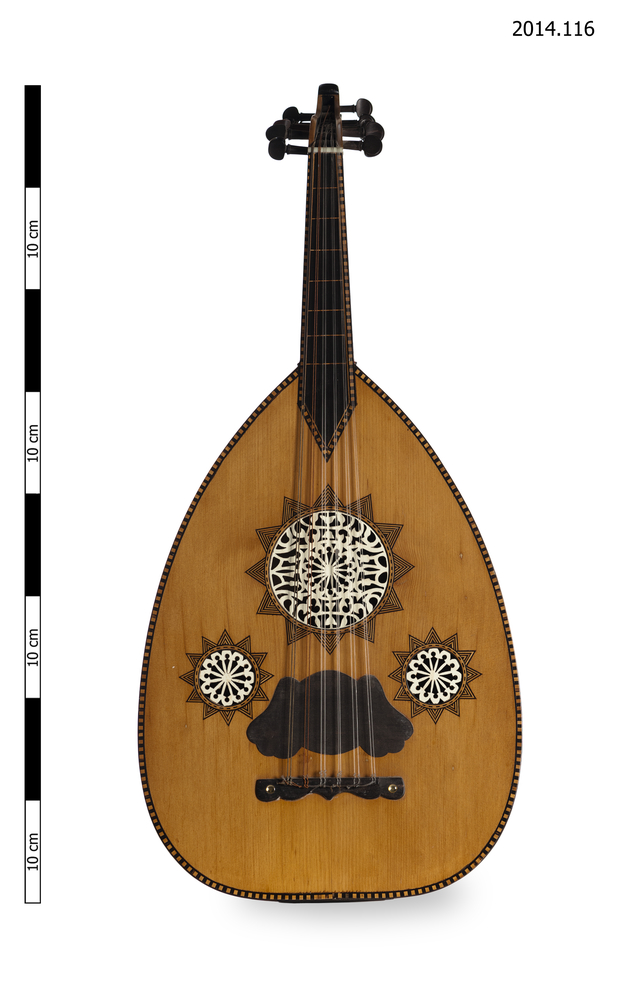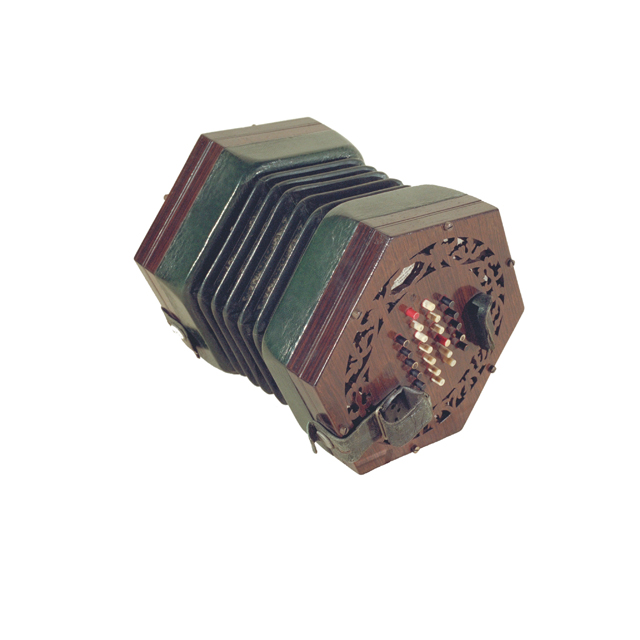
Caja, tabor drum.
This caja was collected in 1987 by Henry Stobart during a research visit to the Potosi region of Southern Bolivia. Stobart writes that the shells of these drums are often made from eucalyptus wood, which is shaped using hot irons. Goat skin is the most common material used for the membranes, although thick plastic is sometimes used as an alternative. The caja is used to accompany wind ensembles, which are usually made up of saripalka and malichu pinkullu duct flutes. In the village of Vitichi where Stobart worked, during Carnival, young men played small brass quena notch flutes while riding on horseback. Each one was accompanied by a girl, who sat side-saddle behind him playing the caja.







